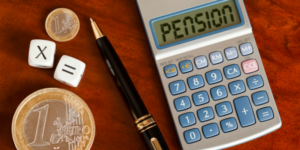Individuals who work for themselves or as contractors, or those working for companies that do not provide access to occupational pension schemes, or those who have pensions from previous employments, have various pension plan options available to them. These include Personal Pension Plans (PPPs), Personal Retirement Savings Accounts (PRSAs), and Personal Retirement Bonds (PRBs).
Personal Pension Plans (PPPs)
PPPs are personally owned pensions that are best suited to self-employed individuals, contractors, and employees whose employers do not offer occupational pensions. Unlike company pension plans, only the individual can contribute to a personal pension, which allows for greater flexibility in terms of investment funds, contributions, and charges.
Personal Retirement Savings Account (PRSAs)
PRSAs, on the other hand, are basic and flexible pension products that can be taken out regardless of employment status. Introduced by the government in 2002 to encourage retirement savings, PRSAs are regulated by the Pensions Authority, which imposes certain restrictions on charges and investment fund options.
A PRSA is a personally owned pension that offers flexibility in terms of saving for retirement. It can be contributed to at any time, and contributions can be stopped at any time as well. PRSAs are designed for individuals of any employment status, including self-employed individuals, homemakers, and those working for companies.
Personal Retirement Bonds (PRBs)
PRBs, meanwhile, are pensions designed for individuals who have accrued pension benefits with a previous employer. It allows for greater control over one’s pension entitlements, as opposed to having the pension benefits managed on behalf of the individual by the trustees designated by their former employer. PRBs also provide several advantages when it comes to the way benefits are drawn down and the age at which funds can be accessed.
When setting up a PRB, individuals must choose how to invest their money. Various pension providers offer a range of unit-linked investment funds, each carrying different degrees of risk across different asset classes. It is essential to find a solution that works best for one’s risk appetite.
Upon retirement, individuals may receive part of their PRB benefits as a tax-free lump sum, subject to certain revenue rules. The remainder of the fund can then be invested in an Approved Retirement Fund or an Annuity. However, it is highly recommended that individuals seek the advice of a qualified advisor before making any decisions to transfer their benefits.
Can self-employed individuals in Ireland contribute to a pension plan?
Yes, self-employed individuals in Ireland can contribute to a pension plan. There are several options available, including personal pensions, self-administered pensions, and PRSAs (Personal Retirement Savings Accounts).
How much can I contribute to my pension plan as a self-employed individual in Ireland?
The amount you can contribute to your pension plan depends on various factors, such as your age, income, and the type of pension plan you choose. However, the maximum tax-relieved contribution for 2022 is €115,000 or 100% of your net relevant earnings, whichever is lower.
Can I claim tax relief on my pension contributions as a self-employed individual in Ireland?
Yes, you can claim tax relief on your pension contributions. The tax relief is calculated at your marginal tax rate, which is currently up to 40%. For example, if you contribute €1,000 to your pension plan, you can claim tax relief of up to €400, which means the actual cost to you is only €600.
What happens to my pension plan if I stop being self-employed?
If you stop being self-employed, you can continue to contribute to your pension plan, but the amount you can contribute may change depending on your income. Alternatively, you may transfer your pension plan to a new scheme or leave it invested until you reach retirement age. It is important to seek advice from a financial advisor before making any decisions about your pension plan.
What are my drawdown options when I retire as a self-employed individual in Ireland?
When you retire, you have the option to withdraw money from your pension fund, also known as drawdown. In Ireland, the main type of drawdown options available is an Approved Retirement Funds (ARF).
An ARF allows you to withdraw money from your pension fund while keeping the rest invested. You can invest in a wide range of assets such as stocks, shares, and property. However, there are minimum annual withdrawal requirements, and you may face tax on any withdrawals.
Another option is an annuity. An annuity is designed to provide you with a regular and guaranteed income for the rest of your life. An annuity can be purchased from the proceeds of:
-A company pension plan
-A personal pension plan
-Additional Voluntary Contributions (AVCs)
-Death benefits from an occupational pension scheme (where the annuity is paid to a beneficiary)
-An Approved Retirement Fund (ARF)
-Personal Retirement Savings Account (PRSA)
Are you self employed and unsure about your Pension contribution or drawdown options?
FJ Hanly & Associates have over 30 years experience advising people in the same circumstances as you. We can offer a free and impartial consultation to review your existing arrangements with no obligation.
Call +353 61 310 533 or email us at info@fjhanly.com



